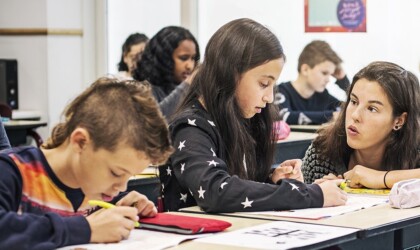The teacher shortage in both primary and secondary education in Zeeland, as in other regions, poses a major problem. Research by ResearchNed (2022) indicates that a different/more effective approach to career development, orientation, and (study) guidance (LOB) could potentially contribute to more students choosing a teacher training program.
On average, 7.6 percent of students in the Dutch higher general secondary education (HAVO)—by far the largest group represented in teacher training programs—opt for a teaching degree. However, this percentage varies from 0 to 23 percent across individual schools, with differences between schools often remaining consistent over several years. In fact, the top 15 percent of schools with the highest HAVO student admissions provide almost four times as many students to teacher training programs as the bottom 15 percent. For the Zeeland context, this report presents alarming figures. The research by ResearchNed shows that, with a few exceptions, Zeeland schools fall within the bottom 15 percent in terms of the number of students progressing to primary education teaching programs (PABO) and secondary education teacher training programs.
**Benchmarking**
From May 2023 to March 2024, Professor Patrick van Schaik compared nearly all Zeeland secondary schools to the characteristics of the top 15 percent of schools supplying students to teacher training programs. The goal was to gain insight into how study choice processes in secondary schools that focus on teacher training programs are functioning and to what extent the identified characteristics influence this. Three research questions were formulated:
1. To what extent are Zeeland secondary schools aware of internal school characteristics that promote choosing a teacher training program?
2. To what extent are these characteristics present in secondary schools?
3. What (joint) interventions can be implemented to increase the number of students progressing to teacher training programs?
The qualitative research was conducted at eight secondary schools in Zeeland through interviews with the career counselor at the respective school (in one case, this involved a HAVO team leader) and group interviews with students, primarily from HAVO grades 4 and 5. The schools included: Calvijn College, Christian School Community Walcheren, Het Goese Lyceum, Lodewijk College, Nehalennia, Ostrea Lyceum, Reynaertcollege, Scheldemond College, and Zwin College.
In addition to general topics such as the structure of the LOB program, the roles of first- and second-line career counselors and mentors/coaches, and the appreciation of these roles by both career counselors and students, the study also explored the extent to which the characteristic aspects of high-supplying schools were reflected in the respective schools. These aspects include: a career counselor who encourages students to consider teacher training, the way the community service internship is implemented, the extent to which students see their teachers as team players and view the teaching profession as innovative, the degree to which teachers are aware that they serve as role models for students considering teacher training, linking a peer tutor program to the LOB program, and involving alumni and student teachers in the LOB program. The results of the study will soon be presented to the career counselors and team leaders of the schools.
This research was made possible in part by the Ministry of Education, Culture, and Science (OCW) and the "Teaching in Zeeland" initiative.







